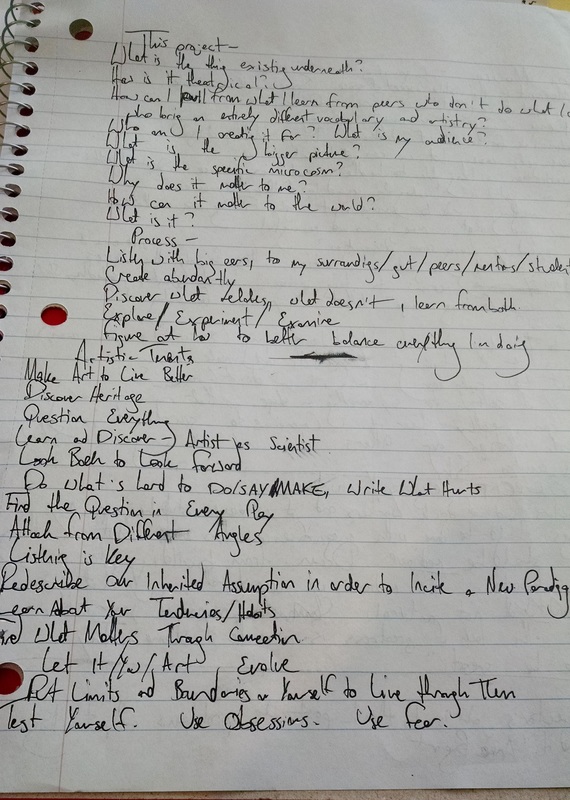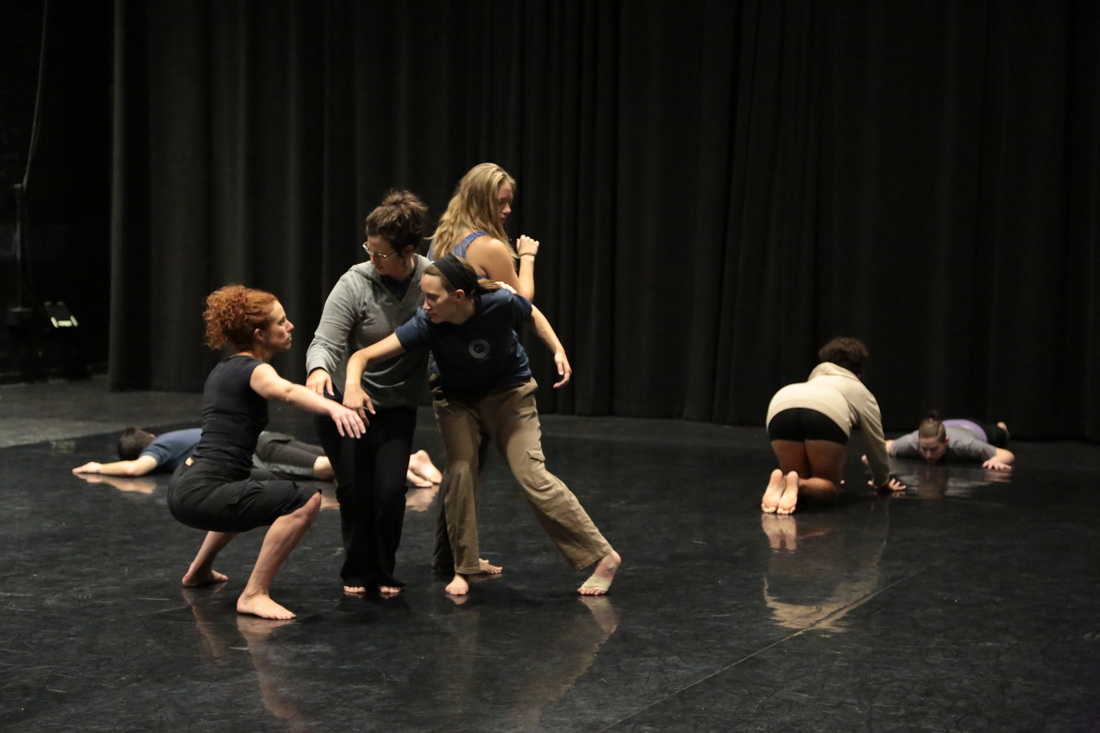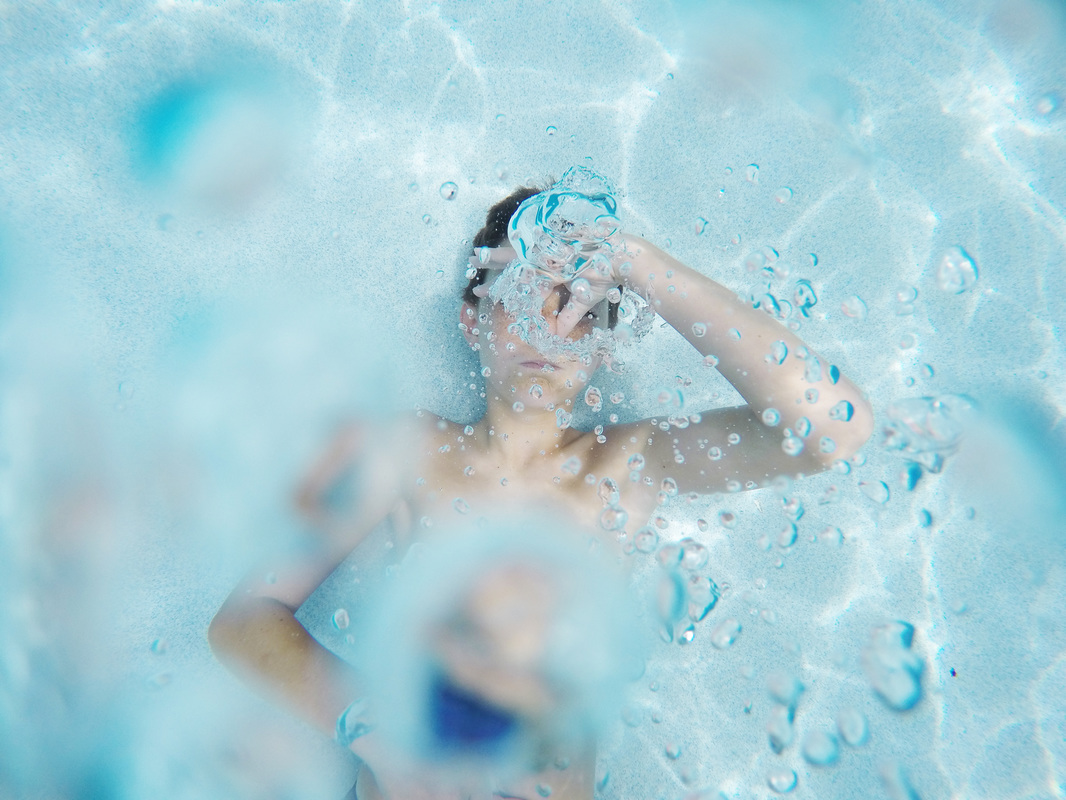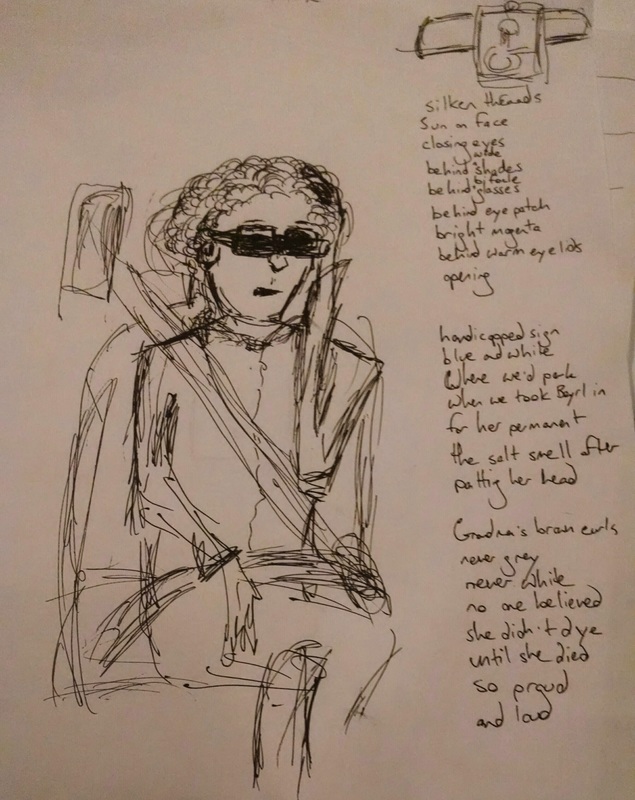|
I've been reading through my notebook from August/September 2014, the month I started graduate school at California Institute of Integral Studies. I'm finding some interesting and useful stuff, as you might imagine. As I'm digging deeper into a new big project, and taking this two week period away from teaching to step back and see into how I want to organize my next few months/year/life as a writer, playwright, theater maker and teaching artist, I found a few lists that I will especially want to keep close at heart. These first two came out of a meeting with my first Creative Inquiry, Interdisciplinary Arts Workshop professor, Cindy Shearer, who became my MFA Project advisor. I know it will be useful to approach my current project with this inquiry and process: THIS PROJECT: What is the thing existing underneath? How is it theatrical? How can I pull from what I learn from peers who don't do what I do? How can I learn from artists who bring an entirely different vocabulary and artistry? Who am I creating this for? What is my audience? What is the bigger picture? What is the specific microcosm? Why does it matter to me? How can it matter to the world? What is it? PROCESS: Listen with big ears to my surroundings/gut/peers/mentors/students Create abundantly Discover what relates, what doesn't, learn from both Explore/Experiment/Examine FIgure out how to better balance everything I'm doing This one came from one workshop class with Cindy. After our cohort visited the DeYoung Museum during a Saturday morning session, we met back at a CIIS classroom in the afternoon to discuss the artistic tenets we found in the artists we observed there (the main exhibit that day being a large collection of Modernists' work). Out of that conversation, we collected a group of artistic beliefs we might share among our small group of five students. As individuals, we pulled out the principles that struck home for each of us on that group list, and added some more to them if we felt called to do so. I feel I can still make art by these tenets: ARTISTIC TENETS: Make Art to Live Better Discover Heritage Question Everything Learn and Discover -- Artist as Scientist Look Back to Look Forward Do what's hard to do/say/make, Write What Hurts Find the Question in Every Play Attack from Different Angles Listening is Key Redescribe Our Inherited Assumption in order to Incite a New Paradigm Learn Your Tendencies/Habits Find What Matters Through Connection Let It/You/Art Evolve Test Yourself. Use Obsessions. Use Fear. Put Limits and Boundaries on Yourself to Live Through Them What inquiry are you entering into with your current project? Would a list of questions help you better understand what you're trying to do? What process do you need to investigate right now? Would it help to give yourself a process to articulate how you'll make this new thing? What are your artistic tenets? How might defining your creative principles or beliefs help you in your process, and in your current project? I'm asking because I'm interested. Respond if you're inclined!
1 Comment
Oh my, it's been a full, enriching week immersed in a seven day SITI Company Masterclass Workshop in Suzuki, Viewpoints and Composition. The learning is busting out my earlobes--physical, mental, relational, emotional learning. The work is difficult--and that's what makes it so empowering. I've had very little online time (which has been immensely good for my brain, heart and body), and such is the case at this moment too. Also, there has been too much muchness to encapsulate succinctly in this form at this time. I will instead leave a few snippets of touchtone points and phrases that stand out in brief reflection of this extraordinary time with Barney O'Hanlon and Stephen Webber in Boise State University Theatre Arts Department's wonderful Danny Peterson Theatre space: "Recycling material assembles meaning over time." Barney O'Hanlon "Creating an action (or a shape) can create and express an emotional state." Barney "It's not just the stuff and text you have...what you're doing and where you're doing it can do the job even clearer." Barney "Chekhov is all about time." Barney "Concentration is the ability to handle several things at once." Stephen Webber "Being an artist is breaking the second law of thermodynamics (the entropy of any isolated system always increases--everything loses energy over time)." We go against our own evolution and make something. Stephen "In repetition, if nothing changes, the audience gets puts to sleep." Barney "Speaking is a physical act, not an intellectual one." Barney "The director has two ensembles: the actors in the show is one group that the director has to take care of, the audience is the second group..." Anne Bogart (quoted by Barney) Creating something in order to survive isn't enough. Find an aesthetic reason beyond survival that is more generous, meaningful and powerful for an audience. Stephen "Actors listen for the news of a distance." What has changed? Barney "Movement is the visible aspect of space. Space is the invisible aspect of movement." Barney "Dance is conscious movement." Barney It never gets easier, but we can get better. We have one more day of this bliss, with a short training session and showings of the short pieces we've been devising in our composition class, all using on The Three Sisters as springboard source material. I'll be grateful for every minute in there. My creative body/mind feels 500 times more motivated, inspired and ready for the next thing than it did before our first day on Sunday. I'm ready for artistic wellspring of autumn. All this week, after my teaching, meetings and other work, I've been submerging.
My aunt has a pool in town. She and my uncle have been traveling the last two weeks, so I've had lucky unlimited access into her waters. She lives a little over eight miles away, and I'm not usually one to drive that distance unless we have a formal family gathering scheduled in advance. As much as I avoid driving, I will, and bike instead, or walk. But this week, I needed some intensive swimming. It seemed the best way to get my whole body tuned up for SITI Company's intensive workshop next week. The illustrious, rigorous, international theater company is bringing their physical actors training in Suzuki and Viewpoints to Boise again this upcoming Sunday through the following Saturday. This year, it's a seven day, whole day workshop, with a composition element added in. We'll be moving our tails and feet off in the mornings, and splitting off into groups to make stuff with our peers in the afternoon. I'm excited and terrified. I think I get more nervous about SITI'S workshops every year, and more aware of how lucky we are that Lisa Lechner and Tracy Sunderland manage to bring them to Boise State University annually each August since 2009 (sans one absent year). This summer, the large amount of teaching I've taken on has subtracted from the time and energy I'd usually put into conditioning my body for the demanding exertion I know is coming. I've done my best, but either it gets harder every year to think my best is good enough, or it really wasn't good enough this time around. All that to say, I've needed an extra push these last couple weeks, and I've gotten them in my aunt's pool, swimming laps until I wear my legs and arms out for real. Still, after a day of work, when I have other demands calling my attention, I don't always want to take my car out to west Boise. It's a good forty minutes just driving, there and back, and it can be hard for me to justify the time at her large house on top of that. But once I get in the little Toyota and swerve down Hill Road, passing subdivisions, and then farmlands, nearing the cemetery where my dad is buried, I start to get into the zone. By the time I arrive, I'm ready. The trip there reminds me of what choreographer Twyla Tharp's says on about ritual of practice in The Creative Habit. Her daily ritual is not the hours of training she does in the morning, or the alarm that wakes her up for it. Her ritual is when she hails a cab that takes her to the gym. Similarly, I get in the white Camry, I journey out a far distance (for me). As I drive, I let go of my projects, my emails, meetings, students, sentences. I think about the water. Once there, when I get in the warm/cool blue, the open atmosphere, the quiet evening, the empty space, I've already begun. I churn through. I lose frustrations. Everything is breath. This experience, one out of my norm, has been reviving my creative thought, my joy for the moment, my appreciation of where I am now. Another reminder of my need for movement, and the importance of hobby. Something extra to do for the love of it. Getting back in my skin, muscles, lungs this way, wearing out my limbs and center going at each stroke as hard as I can, I reacquaint with my mind in a new way. I know next week will be more of the same, except 300 times more. The creative explosion of body meeting mind meeting space meeting time. Here we go. I am ready to learn again. So ready. If you missed our Drop-In Workshop at The Cabin this week and in June, here is a glimpse at the two-part workshop series we undertook those nights. The full essay we worked from can be viewed here (on page 103 of the document), or here you can see it in its original blog form. Go ahead and try it at home. I'd love to hear how it goes for you. June: Image, Memory and the Art of Seeing (Part One) Objective: Exploring Cindy Shearer’s Essay/Memoir “Landscape of Memory", we will look at her process of sharing a moment through remembered detail, (and in part two) banking recorded images into a poem and using drawn image to further see what we see. 1. Read Beginning: Seeing Discuss: What stands out, what images, the moments, the person as a figure. Remember: Close your eyes or find a grounded way to go into your memory bank. Take yourself back to a pivotal time in your life. Perhaps a time when everything went wrong, or everything went right, or some of both, but in any event this period in your life changed you. What can you see there? Hear/smell/taste/feel? Who was there? One instrumental person in that event – perhaps they made this time easier, or harder, or more alive. What were they doing? What did they look like, smell like, sound like…? How did their presence impact you? Note: Go through all this in your mind’s eye. Record it for yourself. Focus on the moment first. The pivotal time in your life. Let yourself see it all clearly. If it helps, you can jot some of these details on your paper as notes. Now focus on the pivotal person in that moment, or another pivotal person to you. Someone important. Let all the details arise, the physical, the personality, the memories. Write: Using everything you remember and any notes you jotted down, show us either this pivotal time in your life OR the person who impacted you, getting down all the details you can muster. Be sure to include all the senses and the important images that come up for you. Try not to do both yet. Pick one. Don’t worry too much about structure, just focus on getting everything down. Write: Now, if you’ve written about the pivotal time in your life, write about the person who impacted you (at that time or another time), and vice versa. Be sure to include all the senses and the important images that come up for you. Don’t worry too much about structure, just focus on getting everything down. Combine: Now, try putting this all together. This might be a pure rewrite where you start over and combine all the details, or you may want to just keep adding to what you started. Whatever the case, try combining all these details into a full standalone piece. If your person and the moment don’t match up in memory, that’s okay. Try to find a connection anyway, either through truth or fiction (which can be the same thing). This can be a story (memoir, fiction, nonfiction), a poem, a scene, a character study, whatever feels right for you and this piece. Go deeply in, and see how much you can pull up. Allow yourself to go into uncomfortable emotional places, which often happens when working with memory. By bringing them up, you can release them on paper. (Share, Reflect) August: Image, Memory and the Art of Seeing (Part Two) 2. Read Middle: Seeing Into, Remembrances of Princeton Discuss: What stands out? image and poetry, the process of embedding a poem in mind, how can we see into images? Collect Images: Go around the room, and even outside this room, and even outside. Collect images. Let yourself collect these images in a slow way. Focus on what you see, hear, feel, smell, taste, but also what memories come up. Try not writing them down yet. Embed them in your mind. With each image, notice what memories come up. Maybe one memory comes up related to an image, and you replay it in your mind, maybe it’s several. You can stay with one image and the memories it brings, or move from image to image. Gather these images and memories into words in your mind. Make sentences you enjoy. Let the language get really specific. As an exercise, try not writing them down right away, but remembering them. If you really need to write them down, go ahead, but be willing to challenge yourself and your memory. Write: Write down the images and sentences, phrases you remember. Rewrite: Now that you see it on paper, see into this even deeper. What’s missing? Add a few things. What’s extra? Whittle it down. Read it out loud to yourself. Let yourself get really happy with what you see and hear. 3. Read End: Seeing What Matters, Seeing Image Matters
Discuss: What stands out, In what ways can we place ourselves in an image (written/lived/seen) and look around? Cartoonist Lynda Barry says an image is a place. What might she mean by that? Look at the text you’ve been constructing. See it again. Put yourself in the images your wrote, or just one, and look around. Draw: Draw that image. You don’t have to be a visual artist. You can use a new piece of paper. Focus on the lines, what you see. Get down a piece of it. It can be cartoony, it can be a sketch, whatever you like. Rewrite/draw: Look at both the drawn image and the written image. What can you do to either? Add a few words to the drawn image? Does the drawing help you see things you left out of the writing? Does the writing make you want to add more to the drawing? Let yourself add more or take away from either. (Share, Reflect. How did that go?) |
Like what I'm posting? You can leave me a tip!
$1, $10, $100, whatevs :) Heidi KraayProcess notes on a work in progress (me). This mostly contains raw rough content pulled out of practice notebooks. Occasional posts also invite you into the way I work, with intermittent notes on the hows and whys on the whats I make. Less often you may also find prompts and processes I've brought to workshops, as well as surveys that help me gather material for projects. Similar earlier posts from years ago can be found on: Archives
April 2024
Categories
|




 RSS Feed
RSS Feed